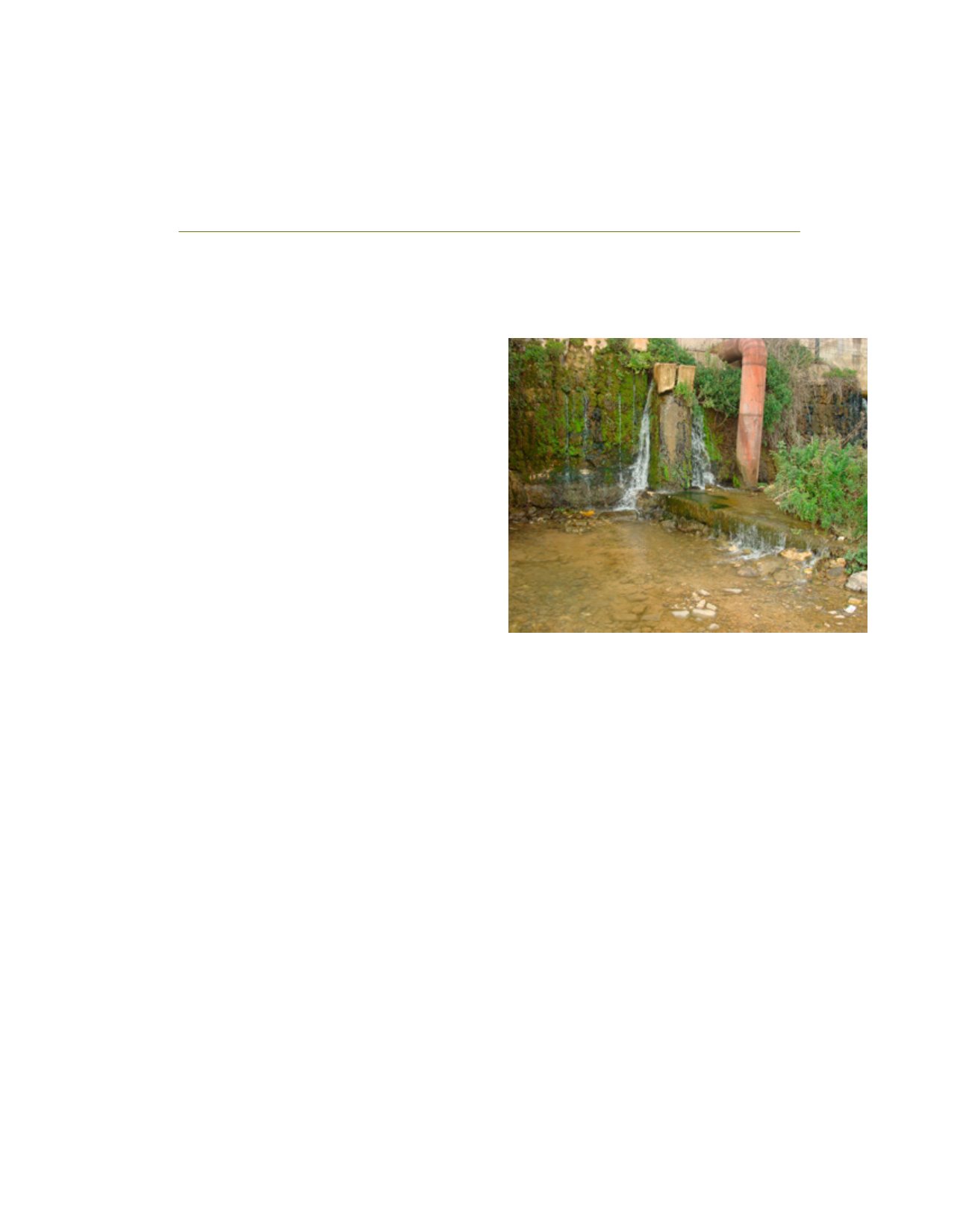

[
] 120
A B
et ter
W
or ld
SDG 6 – New vision for better management of
water supply and sanitation in Lebanon
Amin Shaban, Ghaleb Faour, Mouin Hamzé, National Council for Scientific Research, Beirut, Lebanon
L
ebanon is a country with available water resources,
but with poor water supply and sanitation systems;
a problem common to many countries worldwide.
This motivated the international agencies and UN entities
to highlight the problem and to establish initiatives to find
proper and sustainable solutions. Goal 6 of the 17 intro-
duced by the Inter-Agency Expert Group for Sustainable
Development Goals (SDGs), aims at ensuring availability
and sustainable management of water and sanitation for
all. It provides a unique opportunity for Lebanon to join the
initiative, enhance existing policies, and help to find new
methodologies for water and sanitation monitoring within
an integrated national management strategy.
Lebanon has been described as the Water Tower of the Middle
East. It is the only area in the Middle East and North Africa
region where snow remains for several months on the moun-
tains, occupying approximately 2,500km
2
. The snow, together
with rainfall of between 700 and 1,400mm, usually results
in plentiful water resources including 12 rivers, over 2,000
major springs with a discharge exceeding 10 l/s, and aquiferous
rocks
1
. However, the current climate shows a different picture
and water shortage is prevalent throughout Lebanon. This
is exacerbated by unmanaged and poor sanitation systems,
rendering an alarming state of water and sanitation in Lebanon.
The increasing demand has forced local communities to
manage the issue on the individual level, and thus it becomes
more dependent on alternative sources such as water delivery
by truck and storing water. This practice resulted in consum-
ers paying high rates, generally up to 200 to 300% higher
than public water fees.
2
Challenges to water resources include: the country’s rugged
morphology where mountain chains force the rapid flow of
surface water to the sea before it can be used; the occur-
rence of complex geological structures where significant
rock deformations and karstic conduits allow groundwater
to seep into undefined strata; the changing climate, notably
torrential rainfall and an increase in temperature of 1.8°C;
and water shared across administrative regions, where 27.5
per cent of Lebanon’s land shares river basins with the ripar-
ian regions, and 25 per cent of the territory harbours shared
groundwater reservoirs.
There are also challenges to the sanitation sector at both
national and institutional levels, including: inadequate main-
tenance, with an average of 48 per cent of water lost through
leakage
3
; inadequate sewage treatment facilities
4
where
around 92 per cent of Lebanon’s sewage flows untreated into
rivers and the sea; significant risk of disease due to severe
pollution from solid and liquid wastes; and the arrival, in
2011, of Syrian refugees, accommodated in 1,750 locations,
put pressure on an already strained water infrastructure.
There are also challenges on an individual level, including:
lack of awareness; open dumping of solid waste and sewage
outfall; illegal and unmanaged landfill; unwise use of water;
improper and inefficient irrigation; irresponsible behaviour
due to cheap, affordable water bills; and lack of motivation
for people to work in public sector water management.
The United Nations aims to support countries in monitor-
ing water and sanitation-related issues within the framework
of the 2030 Agenda for Sustainable Development in an inte-
grated manner, and to compile country data to report on
global progress towards SDG 6. In 2017, UN Water decided
that all countries identified as an SDG 6 monitoring focal
point would act as both the overall process coordinator and
the point of communication within the global initiative.
On the request of custodians, Lebanon, through the
National Council for Scientific Research in Lebanon (CNRS-
L) and as the International Hydrological Programme (IHP)
focal point, has reported baseline data for six SDG indicators:
6.2.3, 6.4.1, 6.4.2, 6.5.1, 6.5.2 and 6.6.1.
There are priorities for Lebanon in elaborating on the
SDG 6 indicators, dependent on the degree of the issues
relating to each of the indicators and the degree of impact
An unmanaged water source, a common feature in Lebanon
Image: CNRS-L
















